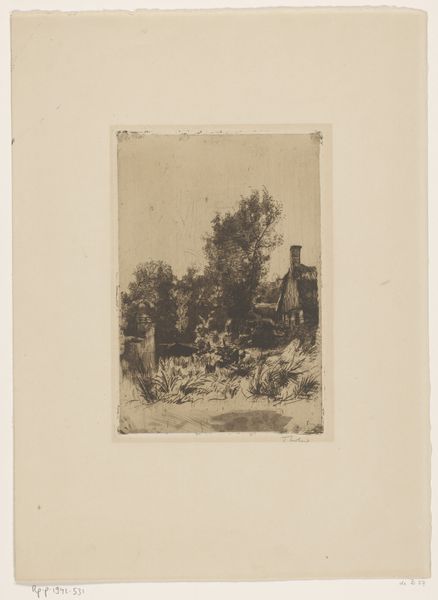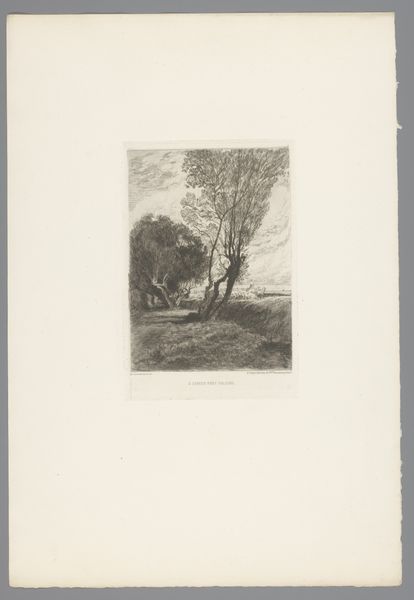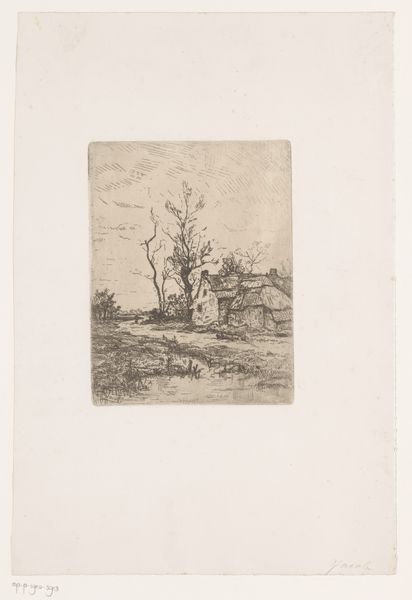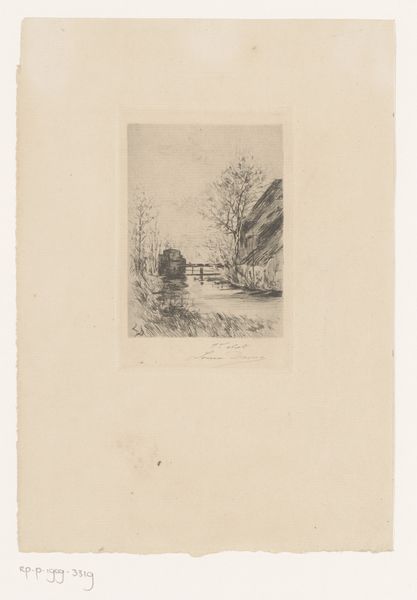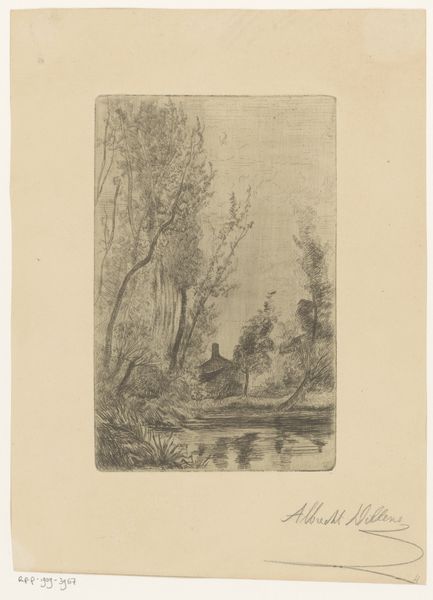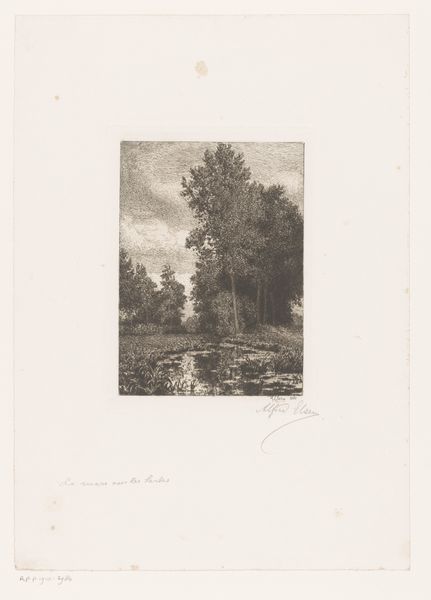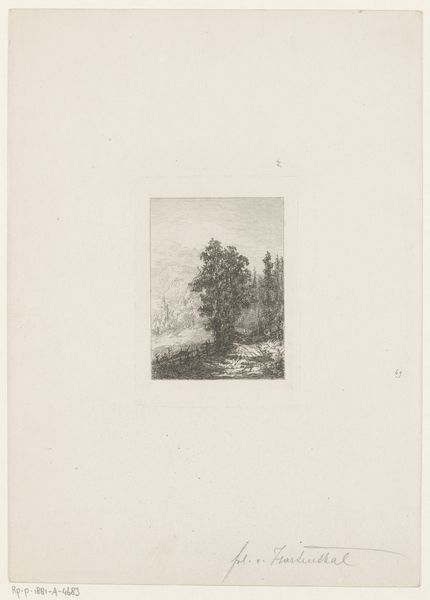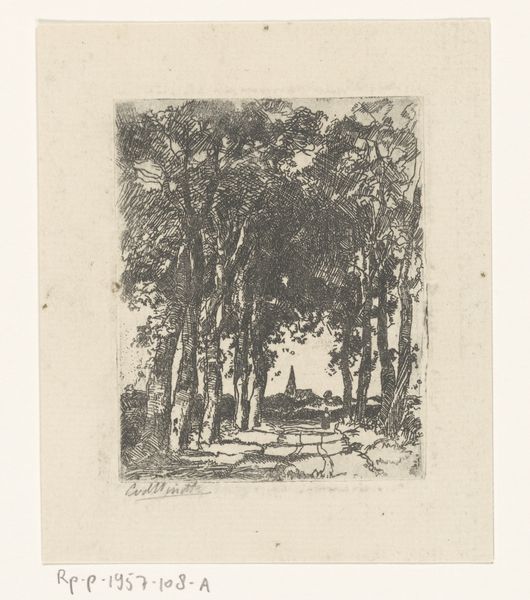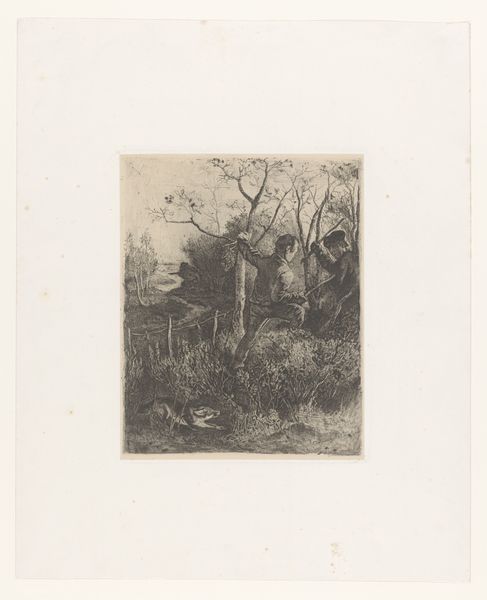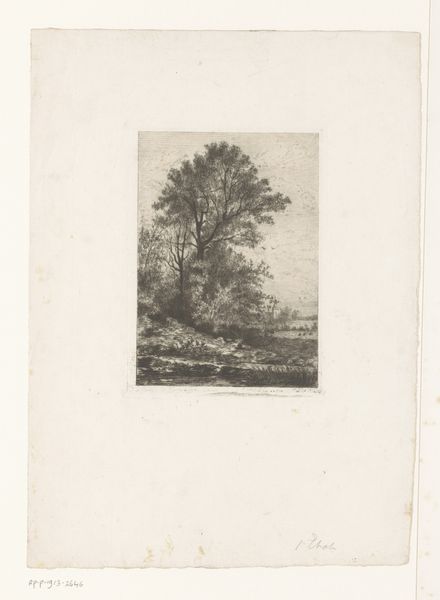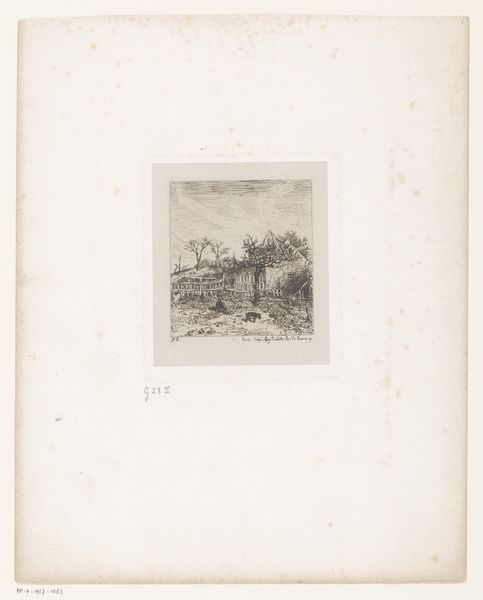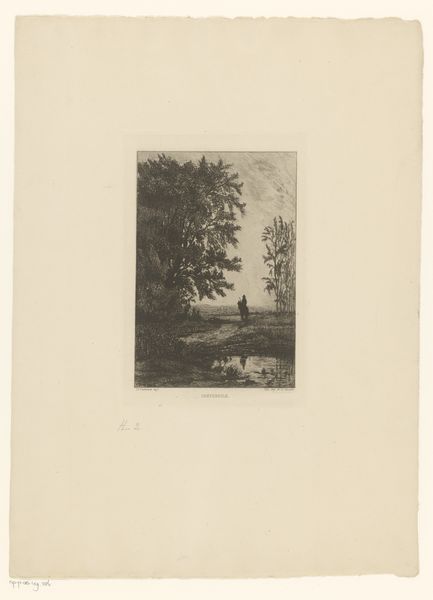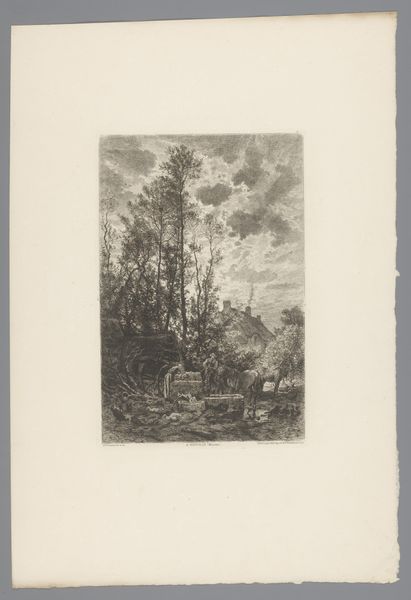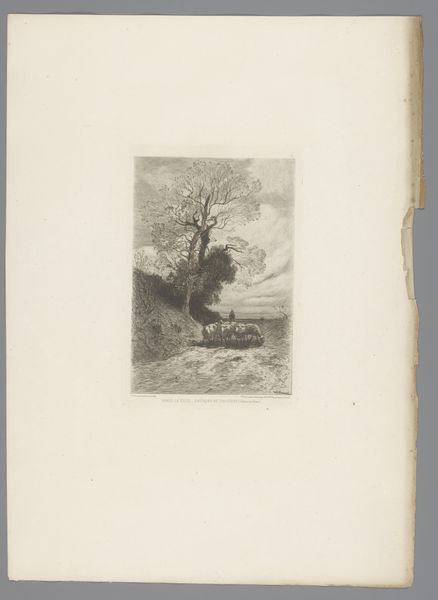
Dimensions: height 267 mm, width 175 mm
Copyright: Rijks Museum: Open Domain
Editor: This is Hendrick van der Hecht's "Landschap met figuur op een brug" from 1870, an etching print. It’s got a really delicate feel to it; a figure stands on a small bridge amidst a very lightly-drawn landscape. What do you see in this piece? Curator: Well, first, consider when this was made. The rise of industrialism profoundly altered understandings of the landscape. Thinkers like Ruskin were railing against the environmental destruction caused by industrial production. Does this etching evoke a certain nostalgia for an unspoiled, pre-industrial world? Editor: That’s interesting. I hadn't thought about that at all. The etching feels more like an attempt to capture a simple, fleeting moment, rather than make a big statement about the environment. Curator: But isn’t the “simple, fleeting moment” always embedded in a larger historical context? The choice to depict a rural scene, the very act of framing nature in this way, is itself a commentary. And that lone figure, is that a celebration of the individual in nature, or a symbol of humanity’s alienation from it? How do gender and class enter the interpretation here? Editor: I guess I’m used to thinking about landscapes more as straightforward representations. Your perspective really opens it up to a more layered reading, like looking at who gets to experience "nature," and what does it mean when that experience is so shaped by social and economic factors. Curator: Precisely. Art is never made in a vacuum, and neither is our reading of it. Considering Romanticism in tandem with Realism gives you a better sense of historical movements; then asking philosophical and intersectional questions deepens and complicates any response. Editor: Thanks! Now I'm seeing so many different layers to this seemingly simple print. Curator: And hopefully recognizing how historical landscapes are always shaped by ideologies.
Comments
No comments
Be the first to comment and join the conversation on the ultimate creative platform.
